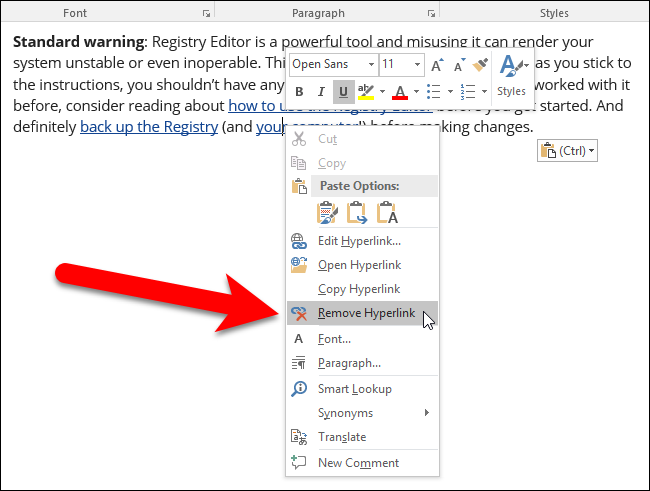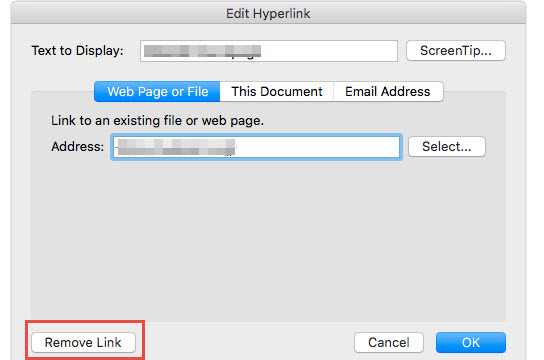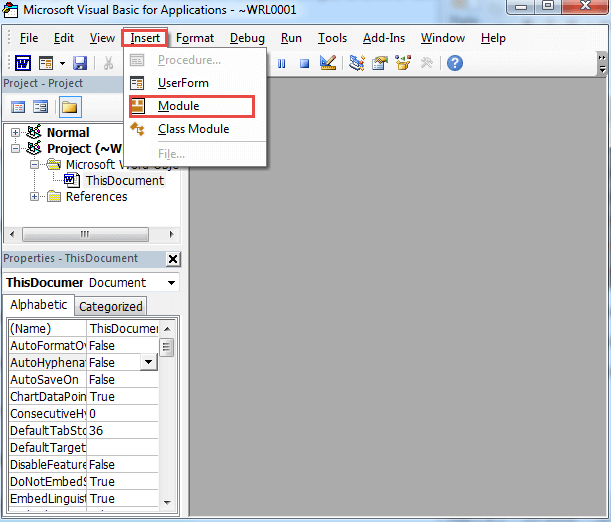
- HOW TO REMOVE HYPERLINK IN WORD IN BULK ON MAC PDF
- HOW TO REMOVE HYPERLINK IN WORD IN BULK ON MAC FULL
- HOW TO REMOVE HYPERLINK IN WORD IN BULK ON MAC CODE
The example macro will delete all index fieldĬodes (wdFieldInde圎ntry). The For…Each statement loops through the Fields collectionĪnd deletes each field type, as determined by the intrinsic constant. In the resulting Macros window, select DeleteInde圎ntries and click Run. Or if you prefer, return to the document andĬhoose Macro from the Tools menu. Run the macro by pressing or by choosing Run The VBE, choose Module from the Insert menu. The Word document open, press to launch the Visual Basic Editor (VBE).

The field-stripping process with a simple macro. The field-deleting macroįortunately, you can bypass the Replace technique and automate An inexperienced user might have trouble.

HOW TO REMOVE HYPERLINK IN WORD IN BULK ON MAC CODE
If you need to retain some of those fields, you’ll have to jump through another hoop, combining the specific code for the field you want to eliminate with the ? wildcard.įor instance, if you wanted to delete only the index fields, you’d enter ^d xe ^?. To mention things like field-generated page numbers and dates. The field codes: index, table of contents, figures, and table of authorities-not The Replace With field empty, click Replace All, and Word deletes all of the fieldĪ second problem with this route is that it deletes all of (The ^d component represents all field codes.) Leave Choose Field from the resulting list of special characters to enter ^d Then, in the Find And Replace dialog, click More and then Will users remember to do that? If they don’t, they might not even realize thatĪfter displaying the codes, you need to choose Replace from Requires know-how that casual users might not have. You mightĪpproach the problem using the Replace command, but it’s a little tricky and
HOW TO REMOVE HYPERLINK IN WORD IN BULK ON MAC FULL
Now, imagine a 100-page document full of codes. When you click Mark, Word inserts an index entry code. We’ll create some index entries using this dialog box to add fields to a Standard menu to toggle the code display.) Doing so inserts an index entry field code, as shown in Figure B.

To see how time-consuming it can be to strip a document ofįield codes, take a minute to insert a few fields into a document. Or you might submit HTML documents for publication on a Web You might submit Word documents to a production system for publication in a We mean that a document contains no hidden formatting or codes. The truth is, most of the time, you won’t.

You might be wondering why you’d ever want to delete fieldĬodes. The good news is that you can use a macro to strip all thoseįield codes in just a few seconds. In a large manuscript with lots of fields, thatĬould take hours. Replace feature will delete them, but the process is a bit awkward. Once you’veĬompleted the document, Word generates your table of contents, index, and soīut a problem arises when you want to delete field codes. Table of contents, index, and so on, and Word inserts a field code. Instead ofĬreating these pieces manually, you mark the text you want included in the Then uses to generate a table of contents, a table of authorities, a table ofįigures, and even an index. For instance, you can mark specific words and phrases, which Word Word offers a number of useful features for managing largeĭocuments.
HOW TO REMOVE HYPERLINK IN WORD IN BULK ON MAC PDF
This article is also available as a PDF download. This macro offers a simple, one-step solution for users of all experience levels. The Replace command can get the job done, but it's a bit tricky. Users sometimes need to clean up a Word document so they can send it to a production system or other publication platform without problematic elements like field codes. Remove field codes from Word documents with this handy macro


 0 kommentar(er)
0 kommentar(er)
